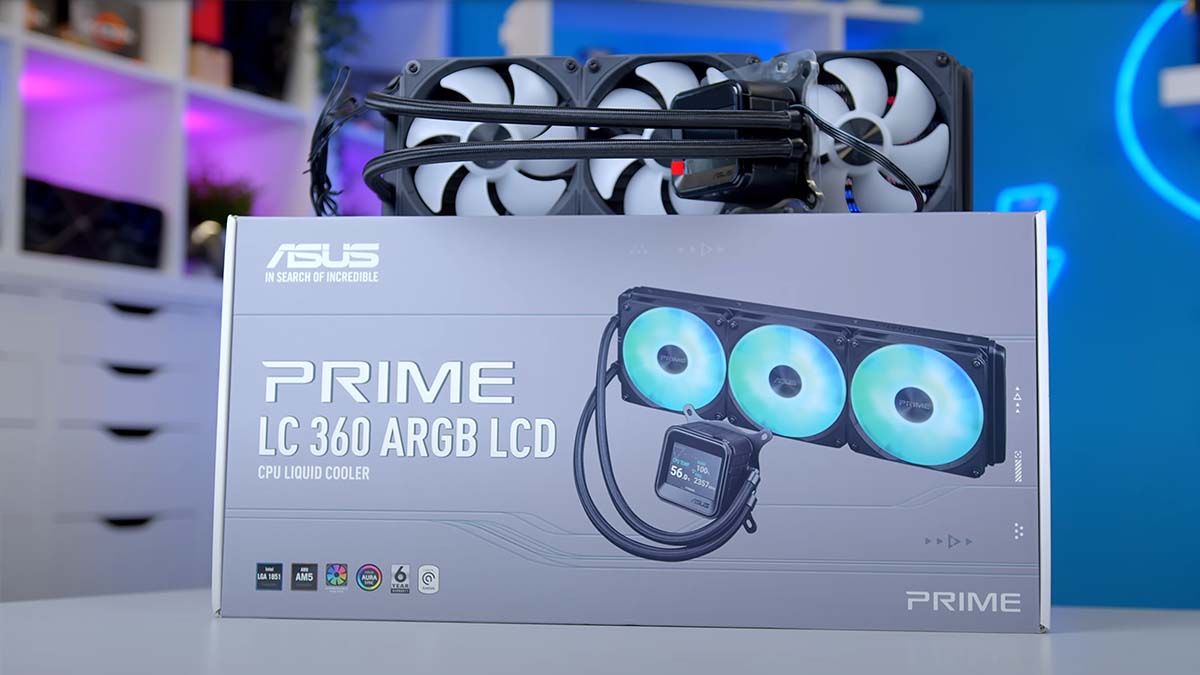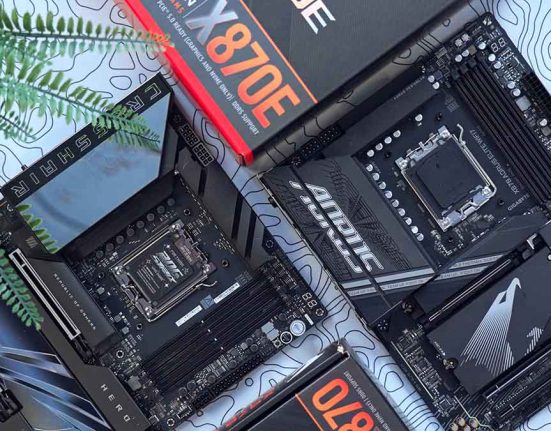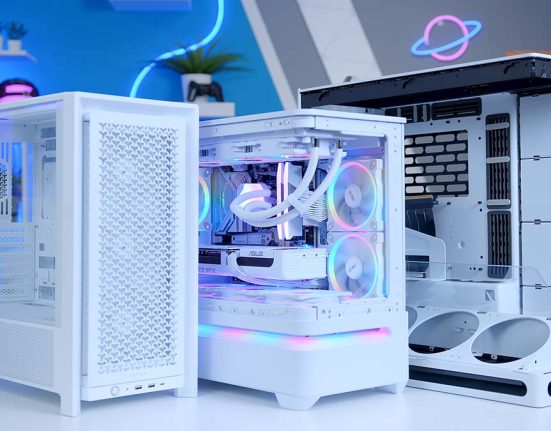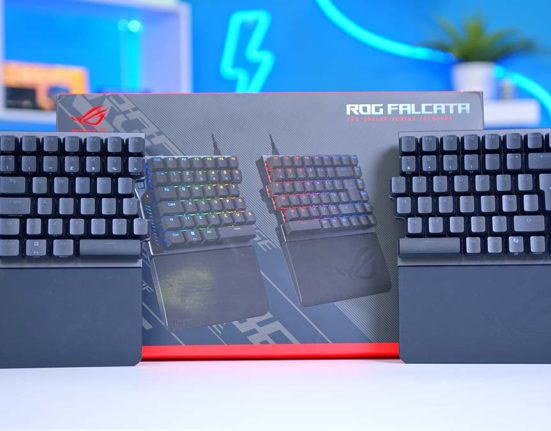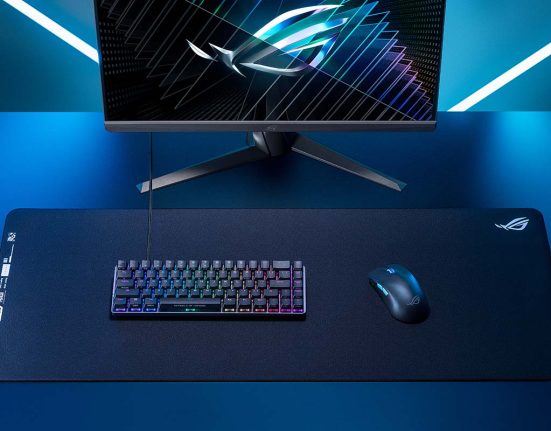The ASUS Prime LC 360 ARGB LCD is a mid-range AIO (all-in-one) liquid CPU cooler that offers builders a streamlined design that’s easy to install and provides plenty of flair for their systems. This liquid cooler features an LCD screen that showcases CPU and GPU temperatures while offering interchangeable backgrounds for those who like to tinker and customise component aesthetics to match the rest of the build.
However, the big question we often face when using any CPU cooler is how it cools. Over the past couple of years, many liquid coolers have hit the market to handle the intense thermals of new processors. However, a few offer an excellent value proposition, making them highly competitive. The two that come to mind are the Montech HyperFlow 360 ARGB and the be quiet! Pure Loop 360mm, both of which are priced affordably and offer really strong thermal results.
For this reason, the ASUS Prime LC 360 ARGB LCD has its work cut out. While the LCD screen is a solid feature, this needs to offer a bit more than fanciful aesthetics to dethrone the likes of Montech and be quiet!. However, we will determine if this liquid cooler is worthwhile in this full review of the Prime LC 360 ARGB LCD. We’ve put it to the test in a series of benchmarks, and we’ll be analysing its specs, design, build process, features, and, most importantly, thermals!
Buy the ASUS Prime LC 360 ARGB LCD on:
Specification
The ASUS Prime LC 360 ARGB LCD cooler is a 360mm AIO utilising a high-performance Asetek pump in combination with ASUS’ daisy-chainable ARGB fans. The Asetek pump is part of the new generation’s design, offering more substantial thermal efficiency to ensure excellent operating temperatures. Asetek is well-known for its pump designs across a wide range of CPU liquid coolers, so it’s not surprising to see one of their latest options here.
The radiator’s dimensions are pretty standard: 394mm long, 120mm wide, and 27mm thick. Although ASUS doesn’t discuss this on the cooler’s product page, the radiator’s fin stack looks to be robust. It’s worth highlighting that this liquid cooler only comes in the 360mm size, so it’ll be worth considering case clearance.

We’re not entirely sure what the Prime LC fans use in terms of the fan bearings, but from our experience with the cooler, they’re built to be quiet, even under load. ASUS has opted for a daisy-chainable design, ensuring seamless cabling and simplified cable management. This means getting the radiator installed in your PC is pretty straightforward.
| Key Specs | ASUS Prime LC 360 ARGB LCD |
|---|---|
| Radiator Size | 360mm |
| Radiator Dimensions (L x W x H) | 394mm x 120mm x 27mm |
| Number of Fans | 3 |
| Bearing Type | N/A |
| Pump Connector | PWM |
| Max Pump Speed | 3600RPM |
| Socket Compatibility | Intel – LGA 1851, 1700, 1200, 115X AMD – AM5, AM4 |
Specs-wise, there’s not a huge amount extra to cover. The Prime LC 360 ARGB LCD uses a standard 4-pin PWM header for the pump and fans and 3-pin ARGB to connect up all of the lighting, so it’s great to see the usage of universal standards instead of proprietary connectors. Additionally, ASUS provides a USB-C to USB 2.0 header cable to control the LCD, which is simple to plug in.

On the pricing front, this AIO is available for around £150 in the UK and about $170-$180 in the US. This isn’t the most expensive liquid CPU cooler on the market, but it also isn’t the most price-competitive. The HyperFlow and Pure Loop are much cheaper and offer efficient thermals, so the Prime LC 360 needs to be at least on par regarding performance to be a strong market choice.
ASUS Prime LC 360 ARGB LCD Design
The Prime LC 360 is a reasonably simplistic cooler in design. ASUS has gone for a black theme across the entire cooler, which includes the radiator, tubing and pump blockhead. ASUS does offer a white version for the non-LCD cooler, so we were hoping to see the same treatment for this variation, but there’s no indication that we’ll see a white iteration anytime soon. This means those looking to build a lighter-themed PC may want to look for an alternative option.
There’s not much to talk about with regard to the design of the radiator. The fans are also black and offer a clean look across the board. Because the cabling is hidden due to the daisy-chain approach, they don’t take away from the look of the cooler, which is nice to see. Each fan offers fully addressable RGB lighting, allowing you to individually control all of the colour and patterns while providing a way to sync up any lighting effects with other addressable RGB components.

The design of the CPU pump blockhead is pretty basic. The pump block’s chassis is black plastic with a grid design, which can be seen from multiple angles. Some will appreciate the simplicity of the look, but I think ASUS could have been a bit more ambitious. While I can appreciate that this is more of a budget-focused AIO, $150 isn’t particularly cheap, and I honestly expected a better design across the board.
Again, with regard to the LCD display, ASUS has kept things simple. The LCD showcases CPU and GPU temperatures and has a couple of different display modes to show this. Builders can change this within Armoury Crate, which is fairly straightforward to install. Unfortunately, if you’re the kind of gamer who likes to tinker, the LCD display is fairly limited in terms of its customisation options.

Overall, I think the design and aesthetic of the ASUS Prime LC 360 ARGB LCD are pretty plain. While the addressable RGB is of nice quality, I expected a bit more from a $150 liquid cooler, especially regarding the quality of the materials.
Installation Process
Fortunately, the installation process is one of the pros of this particular cooler. ASUS has streamlined the design to simplify building with the Prime LC 360 ARGB LCD. Immediately, as you remove the cooler from its packaging, you’ll see that the fans are already pre-installed on the radiator. Because of this, you can skip the first step, which is typically installing the fans on the rad.

Next, we’ll install the radiator inside the case. We decided to get this cooler mounted to the case’s top panel. Using one hand, push the cooler up towards the top panel. Ensure that the tubing is on your right and that any cables are out of sight at the back of the radiator. While still holding on, use the included screws to secure the radiator in place. We recommend putting one screw in each corner so that it can hold the weight of the cooler, allowing you to let go and screw in the rest.

After this, we need to secure the mounting brackets to the motherboard. This can also be done while the motherboard is outside the case, which may save you some time later on. To do this, loosen the four screws on the plastic brackets around the motherboard. There are two screws per bracket; once they’re loose enough, pull the brackets off the board and keep them with your cooling hardware or inside the motherboard box.

Take the AMD brackets provided by ASUS, place them over the posts and use the same screws you removed to secure the brackets to the board. The threads that the CPU blockhead mounts onto should be pointing outwards. Now, place the CPU blockhead on top of the screws, both Intel and AMD systems use the same mounting in this instance.

The last step is slightly finicky. Place the spring collars onto the metal threads and then use the thumbscrew caps to secure them. We recommend starting with one set first and then doing the opposing corner so the collars and screws don’t fly off all at once.

Finally, plug in all of your cables. The CPU cooler should go into ‘CPU_Fan’ or ‘AIO_Pump’, while the fans can plug into a hub or the ‘CPU_Opt’ header. Ensure the pump goes into one of the above headers, as your fan curves and noise levels will be pretty high otherwise.
ASUS Prime LC 360 ARGB LCD Performance
Surprisingly, the Prime LC 360 ARGB LCD’s thermal performance is quite strong. Considering this is being targeted as more of a budget liquid CPU cooler, the results we’ve provided below took us aback.
Cinebench 4-Thread
In the four-thread Cinebench run, the graph immediately shows that the Prime LC 360 ARGB LCD cements itself in third place, with an impressive average of 58°C and a maximum of 62°C. This result puts the Prime LCD 360 ARGB LCD just a single degree above the Montech HyperFlow, one of its competitors. Considering the performance of the non-LCD version of this cooler, I was quite surprised by the results in this benchmark.

Noise levels were low across the board, and based on the reasonably close maximum, the Prime LC 360 ARGB LCD demonstrated a strong ability to handle more volatile workloads with more peaks and troughs in activity.
Cinebench 8-Thread
The strong results continue in the eight-thread Cinebench test. The temperatures jumped up by about 10°C, which is to be expected, as four more cores are being utilised here. There was a higher temperature fluctuation during this run, dropping to the low 60s. While this doesn’t raise concerns, higher thread count workloads might be more demanding to control for this cooler. Despite this, I was still impressed by the results here. The Prime LC 360 ARGB LCD consistently maintains solid temperatures across varying applications.

CPU-Z 8-Thread
Our CPU-Z benchmark is relatively similar to the Cinebench test, but this application ensures stability over a prolonged period. It will consistently hold your CPU at a boost clock speed over a specified thread count, which is handy to see if you’ve overclocked your CPU. During this 66°C and 74The CPU-Z benchmark that we run is fairly similar to the Cinebench test, but this application ensures stability over a prolonged amount of time. It will consistently hold your CPU at a boost clock speed over a specified thread count, which is handy to see if you’ve overclocked your CPU. During this time, 66°C was the average, while 74°C was the maximum.

The Prime LC 360 ARGB LCD sits in third place, with a 3°C lead over the Montech HyperFlow. CPU-Z can return some interesting temperature results with specific coolers, so it’s great to see consistency from the Prime LC 360 ARGB LCD.
Features We Like
Easy to Install
The Prime LC 360 ARGB LCD is one of the easiest coolers to install. Thanks to the pre-installed fans and streamlined cable management system, it can be mounted inside your case in very few steps, making it a great pick for first-time builders.

Daisy-Chained Cabling
This cooler uses a daisy-chained cable management system to keep all the wiring hidden and clean. This ensures the LC 360 cooler is incredibly tidy and makes wiring much easier, as only one cable is needed for all three fans.

Features We Don’t Like
Requires Software for the LCD Screen
One of this liquid cooler’s significant limitations is its software requirement. If you want to use the screen, it has to be plugged in via USB, but it won’t work and display temperatures until the software is installed. Typically, I wouldn’t consider this a problem, but I could not get the software to work. I tend to avoid most CPU cooler software if I can because they all have issues, but because this is a requirement for the LCD, there’s no getting away from it. It’s a shame the software didn’t work, but I hope some updates over time will improve the user experience.

Installing the CPU Blockhead is Finicky
The last part of the installation process for this cooler is mounting the blockhead to the IHS (internal heatspreader). Unfortunately, getting the blockhead mounted isn’t easy because the cooler’s backplate is awkward and slips out from time to time. You have to hold the backplate and blockhead, slip it onto the mounting pillars, and add a spring collar and cap to secure the cooler. James and I both found this part of the cooler installation to be tricky, and it may trip up even some intermediate builders/
Conclusion
ASUS Prime LC 360 ARGB LCD
Product Name: Prime LC 360 ARGB LCD
Brand: ASUS
-
Features
-
Design
-
Performance
-
Value For Money
Summary
The ASUS Prime LC 360 ARGB LCD is a well-rounded 360mm liquid CPU cooler that outperforms almost every other AIO we’ve tested around this price point. It offers excellent thermals and low noise levels and has a pretty straightforward installation process, making it a solid pickup for entry-level or non-experienced builders. However, there are some catches that we need to cover.
The first is the screen. I don’t think it’s that impressive. I couldn’t get it to work during our benchmarking run, and there’s no obvious fix from checking the manual. Additionally, it offers very few customisation options when it does work, which is fairly disappointing. The second caveat, unsurprisingly, is the price. At $150, the Prime LC ARGB 360 LCD isn’t incredibly expensive but isn’t the most competitive offering we’ve seen. A cooler like the Montech HyperFlow ARGB 360 is a solid alternative to the Prime LC 360 ARGB LCD if you’re looking to save some money and are not worried about the screen. I think the Prime cooler’s performance is definitely a big win for ASUS, but it would offer a much stronger value proposition if it were cheaper.
Pros
✅ Outperforms most other budget coolers
✅ Mostly straightforward installation
✅ Minimal cabling
Cons
❌ Finicky backplate install
❌ Couldn’t get screen working
❌Stocking/pricing issues


